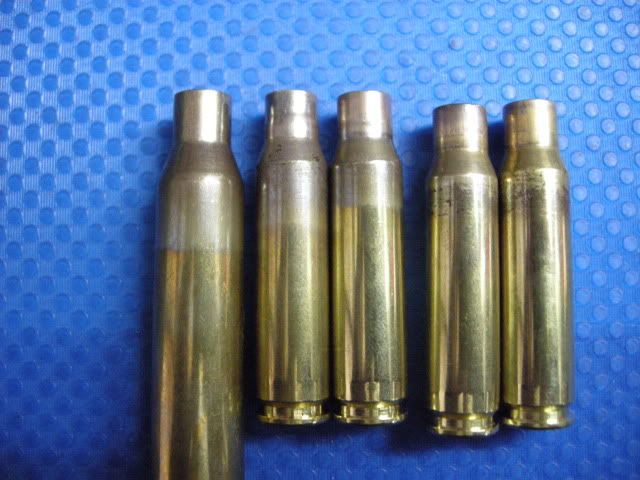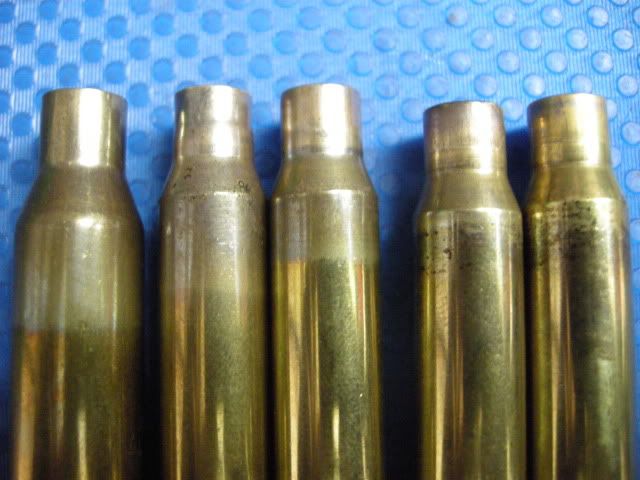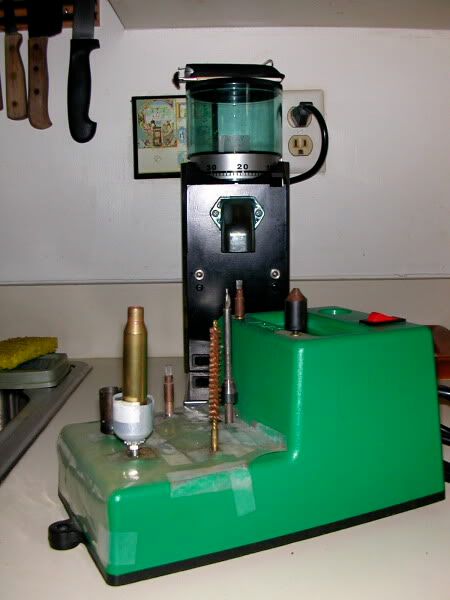Re: Annealing-What Temp?
<div class="ubbcode-block"><div class="ubbcode-header">Originally Posted By: Dolomite_Supafly</div><div class="ubbcode-body">I am going to be doing some testing and I am going to order a few temperature indicating items, either laquer or a wax type pen.
I just need to know what temperature annealing brass occurs so I can run a bead ot the sensing agent down the side of a case to make sure there isn't too much heat making it to far down the case when testing a new idea.
Hornady sells a kit that says 475 degrees on it for $50 or so dollars. I can get the same laquer for $14 but I just want to make sure I get the right temp.
Here is the cheaper laquer methods from McMaster-Carr.
Thanks
Dolomite </div></div>
"Optimal Case Temperatures for Successful Annealing
Brass is an excellent conductor of heat. A flame applied at any point on a case for a short time will cause the rest of the case to heat very quickly. There are several temperatures at which brass is affected. Also, the time the brass remains at a given temperature will have an effect. Brass which has been "work hardened" (sometimes referred to as "cold worked") is unaffected by temperatures (Fahrenheit) up to 482 degrees (F) regardless of the time it is left at this temperature. At about 495 degrees (F) some changes in grain structure begins to occur, although the brass remains about as hard as before--it would take a laboratory analysis to see the changes that take place at this temperature.
The trick is to heat the neck just to the point where the grain structure becomes sufficiently large enough to give the case a springy property, leaving the body changed but little, and the head of the case virtually unchanged.
If cases are heated to about 600 degrees (F) for one hour, they will be thoroughly annealed--head and body included. That is, they will be ruined. (For a temperature comparison, pure lead melts at 621.3 degrees F).
The critical time and temperature at which the grain structure reforms into something suitable for case necks is 662 degrees (F) for some 15 minutes. A higher temperature, say from 750 to 800 degrees, will do the same job in a few seconds. If brass is allowed to reach temperatures higher than this (regardless of the time), it will be made irretrievably and irrevocably too soft.
Brass will begin to glow a faint orange at about 950 degrees (F). Even if the heating is stopped at a couple of hundred degrees below this temperature, the damage has been done--it will be too soft. From this discussion we can see that there are four considerations concerning time and temperature:
1. Due to conduction, the amount of heat necessary to sufficiently anneal the case neck is great enough to ruin the rest of the case.
2. If the case necks are exposed to heat for a sufficient period of time, a lower temperature can be used.
3. The longer the case necks are exposed to heat, the greater the possibility that too much heat will be conducted into the body and head, thereby ruining the cases.
4. The higher the temperature, the less time the case necks will be exposed to heat, and there will be insufficient time for heat to be conducted into the body and head.
You can see that there are a couple of Catch-22s involved in this annealing business. On the one hand, the brass conducts heat quite rapidly, and a fairly high temperature with sufficient time must be attained to do the job. On the other hand, too much time cancels the effect, and we will be left with a case that is too soft and not suitable for anything but scrap. Obviously, there must be a solution; otherwise, not even the cartridge manufacturers could do it right."
http://www.6mmbr.com/annealing.html
This is my little dohickey to spin the cases at about 120 rpm. I made little finger/thumb booties to snatch them out of the cigar tube cup.
As per the competitive shooter at the bottom, in the above linked article, I do this in a somewhat darkened kitchen. I used to throw them into some water in the sink, next to the machine, but I haven't felt the need to do this the past couple of times.
I'm looking for just barely maroon in color, but in the beginning I did torch the shit out of some of them, however they're still working.
Chris







